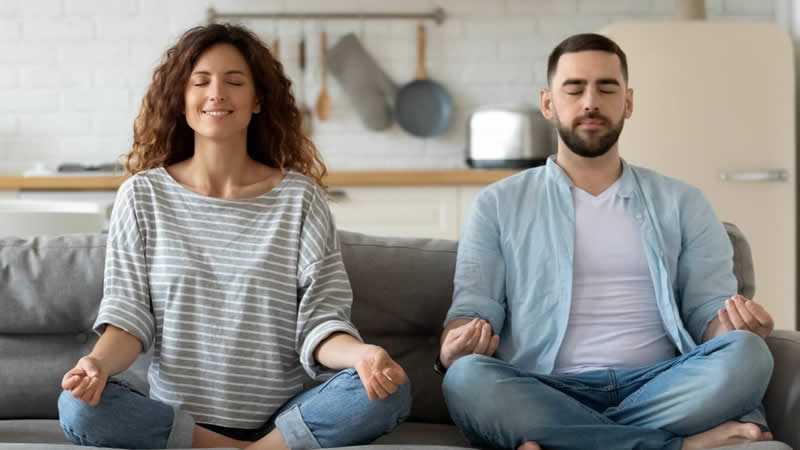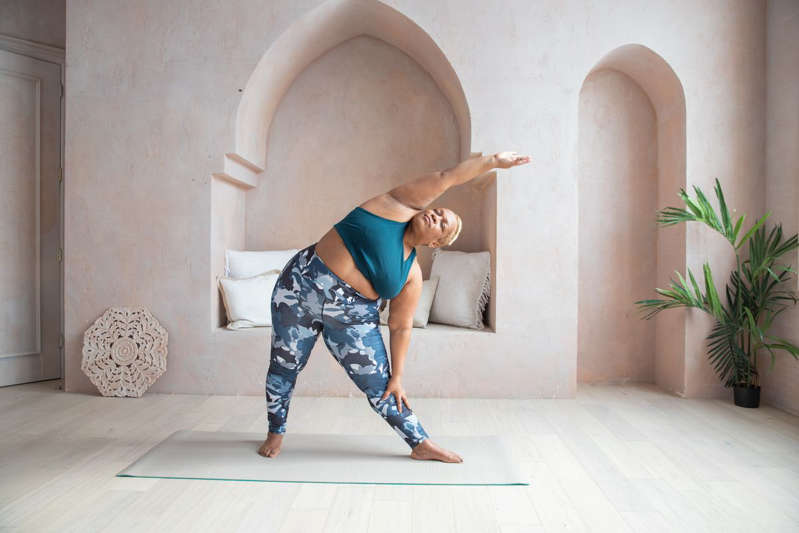
With So Many Types of Meditation, How Do You Find a Technique That Speaks to You?
Share0Ask ten people what meditation is, and you might get ten answers—but they could all be right. It’s a practice that dates back thousands of years and has been part of so many cultures that there are now dozens of ways to do it. Still, they share an underlying similarity:“It’s a practice that cultivates inward investigation,” says Diana Winston, director of Mindfulness Education at UCLA’s Mindful Awareness Research Center.
What accounts for meditation’s lasting and widespread appeal? The answer may lie in a growing body of research that confirms what many practitioners have claimed for years: Meditation has been shown to be helpful taming stress and anxiety, reducing cardiovascular risk factors, managing chronic pain, and improving sleep
To get these benefits, you may worry you have to dedicate hours each week and aim to clear your mind completely. But experts say that’s not exactly true.“That’s too intimidating for most of us,” says Rashi Aggarwal, M.D., director of the residency training program and associate professor of psychiatry at Rutgers New Jersey Medical School in Newark.
Early research is finding that even mini-meditations of just 10 minutes may be beneficial. And as for emptying your mind?“It’s not about attaining perfection,” Dr. Aggarwal says.“What meditation can do is help us train our brains to wander less and ruminate less so that we can distance ourselves from our worries.”
So, which form of meditation is the best?“The best type for you is the one you’ll actually do,” says Winston.“Try a few different kinds, even if they’re outside your comfort zone. If you feel more focused and calmer afterwards, then it’s working. Trust your gut. If it feels alien, then don’t do it. See what makes sense to you.”
Ahead, experts explain the common types of meditation and how to get started to cultivate your own practice.
- Mindfulness meditation
What it is: Mindfulness meditation is drawn from Buddhist contemplative traditions; it incorporates breathing sensations and teaches how to turn one’s attention back to the experience when distractions arise. It’s a method of paying attention to your present moment experiences with a curiosity, openness, and willingness to be in that specific time without judgment.“It’s both a meditative practice and a quality of attention for any given moment, no matter what you’re doing,” says Winston. - Transcendental meditation
What it is: You’ll connect with a teacher who gives you a mantra, a word you’ll repeat over and over to concentrate your mind and go beyond (or“transcend”) your surface level of awareness. The goal is to unlock joy, creativity, and calm.
How to get started: Find a certified TM teacher for one-one-one instruction here, but you’ll have to pay a fee.
- Cultivation practices
What it is: There are many different types of cultivation practices, which are derived from a secularization of Buddhist traditions and focus on generating feelings of good will toward yourself and others. Typically, you’ll get into a comfortable position on a chair or cushion and focus on breath and sending affirming feelings and repeating positive phrases. The goal is to nurture states such as loving-kindness, compassion, joy, or balance, as well as a gentle attitude toward ourselves and others.
“These practices come out of the mindfulness movement but focus on cultivating a specific positive state of heart or mind,” says Winston.
- Guided imagery
What it is: This type of meditation typically is more goal-directed, that is, you’re focused on a specific intent such as healing, relaxation, or sleep preparation. You’ll be guided through a series of instructions with the creative use of imagery, such as visiting your favorite beach, feeling the sand under your toes, sensing the water lapping at your feet, and so on. Because of the step-by-step directions you’ll be given, it’s often one of the easiest types for beginners, says Dr. Aggarwal.
- Prayer
What it is: Prayer is a type of communion that connects one with God or a higher power you personally understand. While many people don’t equate prayer with meditation, it’s essentially a way of focusing your attention away from the moment to center one’s heart and mind.
“People use prayer in different ways,” says Winston.“Sometimes it’s about asking for what you want, such as good health. Sometimes it’s about a deep listening, and sometimes it’s about bringing your mind to a higher power and feeling supported or giving thanks.”
How to get started: It’s performed by most religious traditions such as Christianity, Judaism, Islam, and many others. It can be done using a faith’s established prayers, or it can be as simple as speaking directly to God about your thoughts, hopes, fears, and needs.

- Movement meditation
What it is: This type of meditation utilizes movement to help focus the mind. This may include specific forms such walking meditations, such as walking a labyrinth, yoga, or tai chi. Your attention is focused on the specific movements, usually accompanied by certain breathing techniques. This type of meditation overlaps with mindfulness. - Future visualization meditation
What it is: This technique evolves from the practice of guided imagery, but it’s about imagining your future and identifying goals for your health, relationships, home, and career.
“You look ahead and think about having a perfect day tomorrow, six months from now, and five years from now. This helps you get attuned to what you actually value versus what you say you value, as well as provides focus on what skills you’ll need to achieve these goals,” says Dr. Aggarwal.
- Gratitude meditation
What it is: This practice promotes a positive mood, hope, and resilience. It can be as simple as sitting quietly, breathing deeply in and out, and thinking of all the people for whom you are grateful, but guided visualizations also may be helpful.
- Forest bathing
What it is: In the 80s, the Japanese Ministry of Agriculture created the term“forest bathing” which means to absorb the forest atmosphere. The practice encourages people to spend time connecting with nature, whether it’s walking quietly, sitting in a peaceful setting and focusing on your breathing, or gardening. In fact, an increasing amount of research has found that being in nature is good for us, including improved mental health, better sleep, and boosting feelings of connection during times of social isolation.
How to get started: Spend at least 20 minutes in nature every day. If you don’t have that much time, even a few minutes is better than nothing.

- Body scan meditation
What it is: Also called progressive relaxation, this type of meditation systematically guides you to focus on different parts of your body from your toes to your face. It’s designed to make you aware of your bodily sensations and to relieve tension. You can do this seated, sitting, or lying down and it is often suggested to be practiced before bed.
